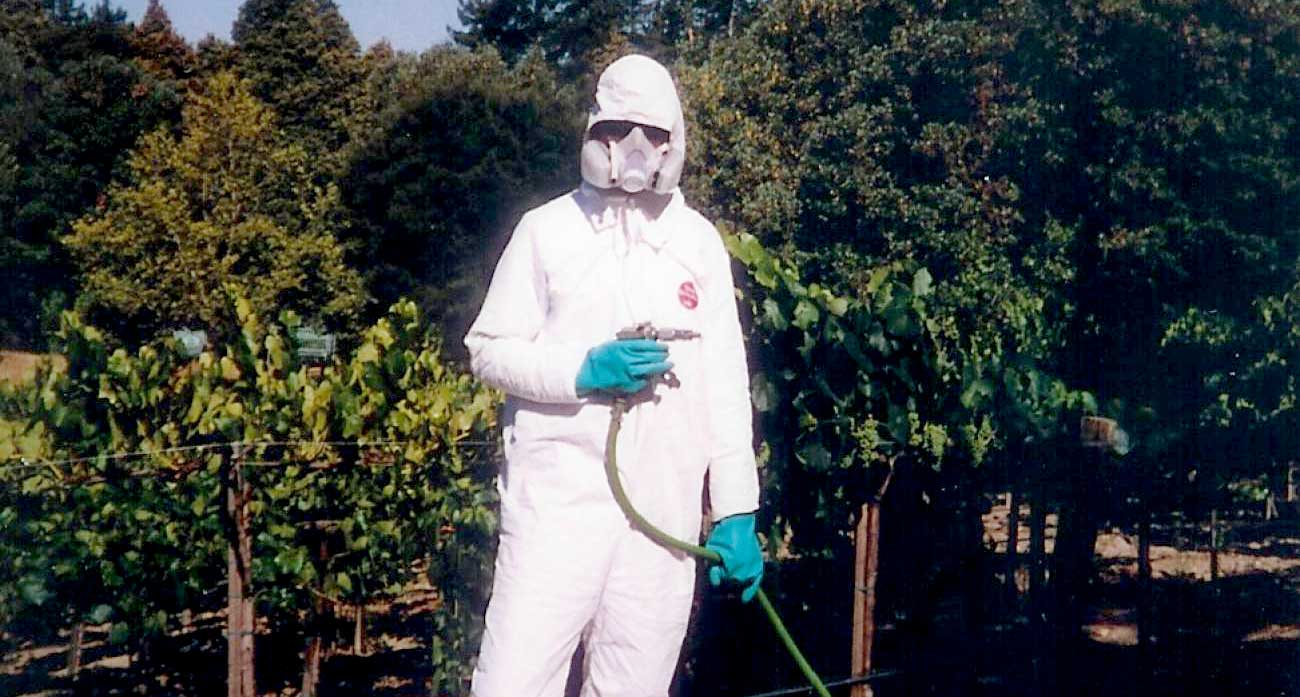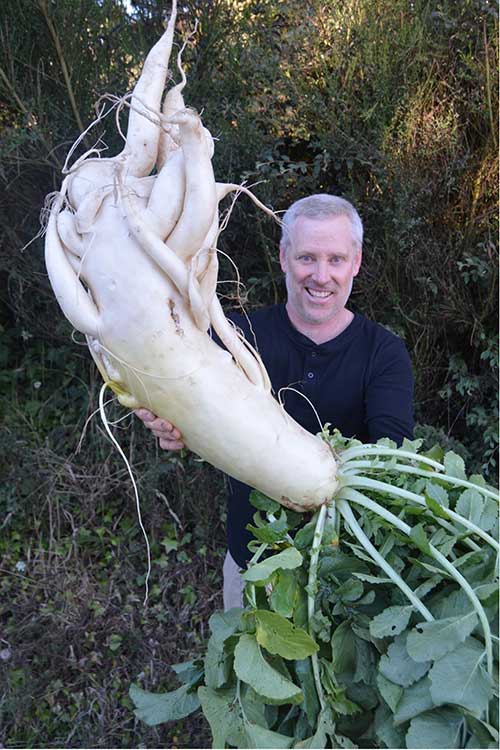Polly is coordinator of the Pesticide Safety Education Program at MU.

What do you do in your current role with the University of Missouri?
I work as the Pesticide Safety Education Program (PSEP) coordinator. This entails working with various extension specialists to build the pesticide safety program, along with updating our manuals and resources. I also represent the state of Missouri in the American Association of Pesticide Safety Educators and at the national Pesticide Applicator Certification and Training conference.
How long have you worked in this position?
Six months.

While in California during the pandemic, Polly made national news with his family’s giant produce, such as this 21.5-pound daikon radish. Polly says through this process he was able to encourage people in his community to start gardening and find a small piece of comfort in an unstable world.
What is your favorite part about the work you do?
I’ve liked meeting and working with MU Extension specialists and my fellow PSEPs in surrounding states. It's been great to combine my real-world experience as a commercial applicator and environmental consultant in this role.
Additionally, I’ve enjoyed the level of collaboration I am experiencing, such as working with top-level entomologists from multiple states. The opportunity to teach webinars on pesticide safety for the United States Environmental Protection Agency has been a real blessing with the ensuing flood of positive feedback from all over the country. It’s been fun to hear reactions to my illustrations during those webinars as well. Especially the reactions I receive when discussing the time my spray rig exploded and drenched me with the insecticide acephate.
How are you helping MU Agriculture and Environment Extension reach our #2xAg2030 goal?
The question of the century. I think pesticides are a central issue that will make or break the agriculture industry. The secondary, but related, issue we need to be mindful of is water quality.
Our challenge is to proactively guide the industry in a direction that avoids regulatory violations and lawsuits. Better yet, we need to guide users to act safely before the public asks regulators to step in. Violations and lawsuits have undermined agriculture in a handful of other states. We need to avoid that here. I watched this happen when I lived on the West Coast. Some landowners didn’t believe water quality or pesticide safety issues would occur in their area until it was too late.
Staying on top of these two “make-it-or-break-it” topics will require innovation, collaboration and diplomacy, starting with pesticide safety education. And that is where I can come in as a Pesticide Safety Education Program coordinator.
What is something your teammates may not know about you?
A lot. Honestly, I have a hard time believing my own life story. One of the classics is the time a friend and I were bobbing about 5 miles off the Pacific coast of California in our sea kayaks. It was the longest trip we’d made at that point.
My buddy made the comment that we were past the 4-mile mark where you start seeing humpback whales. Five minutes passed and I reached to adjust my landing net to avoid tangling my fishing pole. As I leaned forward, the ocean exploded. Two adult humpback whales erupted from the depths in the most terrifying display of hydrologic power I had ever seen. Our brains went into traumatic survival mode. As we screamed, it seemed like time slowed down exponentially and the 30-ton, school-bus-sized monsters hovered in the air for a long time before slowly sinking back into the ocean in perfect side-by-side formation. But the explosion they caused 20 feet in front of us had us fighting to keep our kayaks up. It was pure adrenaline.
As the whales went under the water, they rolled into an aquatic maneuver that defied logic as they again shot skyward in a crisscross. This again had us fighting to keep our boats up. They then proceeded to feed on krill right in front of us before disappearing into the depths from which they’d mysteriously appeared.
We sat shaking, breathing,and trying to get our brains back online for several minutes, thinking the ordeal was over. Little did I know one of my new cetacean friends would decide to float right up underneath my kayak until it was almost touching my boat and then spouted several feet from me. There’s no way to recreate the explosive, hollow sound, my high-pitched scream, the backflip my heart performed or my friend’s laughter, but that whale gave me the closest thing to a heart attack I could imagine. The story of that adventure is longer, but that summarizes the time I could have been crushed by whales.
Writer: Ashley Craft